-
 Bitcoin
Bitcoin $106,754.6083
1.33% -
 Ethereum
Ethereum $2,625.8249
3.80% -
 Tether USDt
Tether USDt $1.0001
-0.03% -
 XRP
XRP $2.1891
1.67% -
 BNB
BNB $654.5220
0.66% -
 Solana
Solana $156.9428
7.28% -
 USDC
USDC $0.9998
0.00% -
 Dogecoin
Dogecoin $0.1780
1.14% -
 TRON
TRON $0.2706
-0.16% -
 Cardano
Cardano $0.6470
2.77% -
 Hyperliquid
Hyperliquid $44.6467
10.24% -
 Sui
Sui $3.1128
3.86% -
 Bitcoin Cash
Bitcoin Cash $455.7646
3.00% -
 Chainlink
Chainlink $13.6858
4.08% -
 UNUS SED LEO
UNUS SED LEO $9.2682
0.21% -
 Avalanche
Avalanche $19.7433
3.79% -
 Stellar
Stellar $0.2616
1.64% -
 Toncoin
Toncoin $3.0222
2.19% -
 Shiba Inu
Shiba Inu $0.0...01220
1.49% -
 Hedera
Hedera $0.1580
2.75% -
 Litecoin
Litecoin $87.4964
2.29% -
 Polkadot
Polkadot $3.8958
3.05% -
 Ethena USDe
Ethena USDe $1.0000
-0.04% -
 Monero
Monero $317.2263
0.26% -
 Bitget Token
Bitget Token $4.5985
1.68% -
 Dai
Dai $0.9999
0.00% -
 Pepe
Pepe $0.0...01140
2.44% -
 Uniswap
Uniswap $7.6065
5.29% -
 Pi
Pi $0.6042
-2.00% -
 Aave
Aave $289.6343
6.02%
How to set a stop loss for DMI? Should I stop loss when +DI turns downward?
Use DMI to set stop loss: identify trend with +DI/-DI, assess strength with ADX, and place stop below swing low for uptrends or above swing high for downtrends.
Jun 16, 2025 at 04:35 am
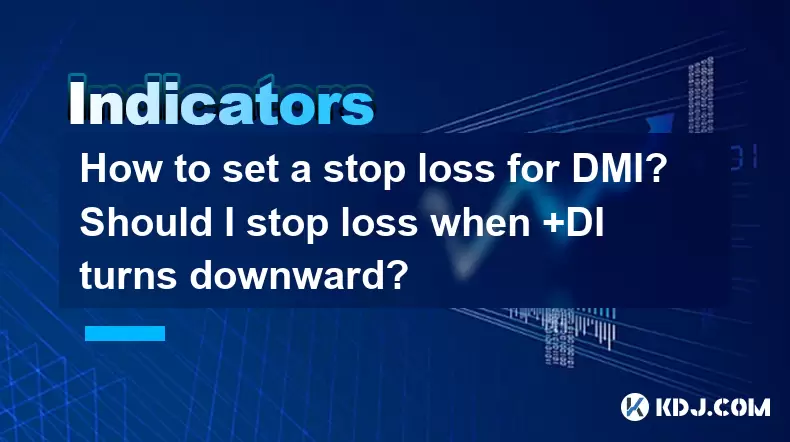
Introduction to DMI and Stop Loss
Directional Movement Index (DMI) is a popular technical indicator used by traders to determine the strength of a trend and the direction in which a market is moving. It consists of three lines: the Positive Directional Indicator (+DI), the Negative Directional Indicator (-DI), and the Average Directional Index (ADX). While DMI can help traders make informed decisions about entering and exiting trades, setting an effective stop loss is crucial for managing risk. In this article, we will explore how to set a stop loss using DMI and discuss whether you should stop loss when the +DI turns downward.
Understanding DMI Components
Before we delve into setting a stop loss, it's important to understand the components of the DMI. The +DI measures the upward price movement, while the -DI measures the downward price movement. The ADX quantifies the strength of the trend, regardless of its direction. A rising ADX indicates a strengthening trend, while a falling ADX suggests a weakening trend. These components help traders gauge the market's momentum and direction.
Setting a Stop Loss with DMI
Setting a stop loss using DMI involves analyzing the interactions between the +DI, -DI, and ADX. Here's a step-by-step guide on how to set a stop loss using DMI:
- Identify the Trend Direction: Use the +DI and -DI to determine the trend direction. If the +DI is above the -DI, the market is in an uptrend. Conversely, if the -DI is above the +DI, the market is in a downtrend.
- Assess Trend Strength: Use the ADX to assess the strength of the trend. A value above 25 typically indicates a strong trend, while a value below 20 suggests a weak trend.
- Set the Stop Loss Level: Based on the trend direction and strength, set your stop loss at a level that minimizes potential losses while allowing for market fluctuations. For an uptrend, place the stop loss below a recent swing low. For a downtrend, place it above a recent swing high.
Should You Stop Loss When +DI Turns Downward?
The question of whether to stop loss when the +DI turns downward is a nuanced one. The +DI turning downward can signal a potential weakening of the bullish momentum, but it doesn't necessarily mean the uptrend is over. Here are some factors to consider:
- Confirm with Other Indicators: Don't rely solely on the +DI. Look at other technical indicators like the ADX and -DI to confirm the trend's direction and strength. If the ADX is still rising, the trend might still be strong despite the +DI turning downward.
- Price Action: Observe the price action. If the price is still respecting the uptrend support levels, it might be premature to exit the trade.
- Risk Management: Always prioritize risk management. If the +DI turning downward aligns with other bearish signals and your stop loss level is hit, it might be wise to exit the trade to minimize losses.
Practical Example of Setting a Stop Loss with DMI
Let's go through a practical example of how to set a stop loss using DMI:
- Scenario: You are trading Bitcoin (BTC) and notice that the +DI is above the -DI, indicating an uptrend. The ADX is at 30, suggesting a strong trend.
- Identify Recent Swing Low: The most recent swing low for BTC is at $29,000.
- Set the Stop Loss: To set the stop loss, place it just below the recent swing low, for example, at $28,900. This allows for some market volatility while protecting against significant losses.
- Monitor the +DI and ADX: Keep an eye on the +DI and ADX. If the +DI starts to turn downward and the ADX begins to decline, it might be a signal to reassess your position. If the price hits your stop loss at $28,900, exit the trade.
Adjusting Stop Loss Based on DMI Signals
As the market evolves, it's important to adjust your stop loss based on new DMI signals. Here's how you can do it:
- Trailing Stop Loss: If the trend continues to strengthen, you can use a trailing stop loss to lock in profits. As the price moves in your favor, adjust the stop loss to a new recent swing low (for an uptrend) or high (for a downtrend).
- Reassess the Trend: If the +DI and -DI cross, or if the ADX drops significantly, it might be time to tighten your stop loss or exit the trade altogether. Always reassess the trend direction and strength before making adjustments.
Using DMI in Conjunction with Other Indicators
While DMI is a powerful tool, it's often more effective when used in conjunction with other indicators. Here are some ways to enhance your stop loss strategy:
- Moving Averages: Use moving averages to confirm the trend direction. If the price is above a long-term moving average, it supports the bullish trend indicated by the DMI.
- Relative Strength Index (RSI): The RSI can help identify overbought or oversold conditions. If the RSI diverges from the price, it might signal a potential reversal, prompting you to adjust your stop loss.
- Volume: Monitor trading volume. A decrease in volume during a trend might suggest weakening momentum, which could influence your stop loss strategy.
Frequently Asked Questions
Q: Can I use DMI for short-term trading?
A: Yes, DMI can be used for short-term trading. However, it's important to use shorter timeframes and adjust your stop loss more frequently to account for the increased volatility.
Q: Is it necessary to use all three components of DMI for setting a stop loss?
A: While all three components (+DI, -DI, and ADX) provide a comprehensive view of the market, you can focus on the +DI and -DI for trend direction and use the ADX as a secondary confirmation. The key is to find a balance that works for your trading strategy.
Q: How often should I adjust my stop loss based on DMI signals?
A: The frequency of adjusting your stop loss depends on your trading style and the market's volatility. For active traders, daily or even intraday adjustments might be necessary. For longer-term traders, weekly or monthly adjustments could suffice. Always stay vigilant and adjust as needed based on new DMI signals.
Q: Can DMI be used effectively in highly volatile markets?
A: Yes, DMI can be used in volatile markets, but it's crucial to set wider stop loss levels to account for the increased price swings. Additionally, combining DMI with other volatility indicators like Bollinger Bands can enhance your strategy.
Disclaimer:info@kdj.com
The information provided is not trading advice. kdj.com does not assume any responsibility for any investments made based on the information provided in this article. Cryptocurrencies are highly volatile and it is highly recommended that you invest with caution after thorough research!
If you believe that the content used on this website infringes your copyright, please contact us immediately (info@kdj.com) and we will delete it promptly.
- 2025-W Uncirculated American Gold Eagle and Dr. Vera Rubin Quarter Mark New Products
- 2025-06-13 06:25:13
- Ruvi AI (RVU) Leverages Blockchain and Artificial Intelligence to Disrupt Marketing, Entertainment, and Finance
- 2025-06-13 07:05:12
- H100 Group AB Raises 101 Million SEK (Approximately $10.6 Million) to Bolster Bitcoin Reserves
- 2025-06-13 06:25:13
- Galaxy Digital CEO Mike Novogratz Says Bitcoin Will Replace Gold and Go to $1,000,000
- 2025-06-13 06:45:13
- Trust Wallet Token (TWT) Price Drops 5.7% as RWA Integration Plans Ignite Excitement
- 2025-06-13 06:45:13
- Ethereum (ETH) Is in the Second Phase of a Three-Stage Market Cycle
- 2025-06-13 07:25:13
Related knowledge
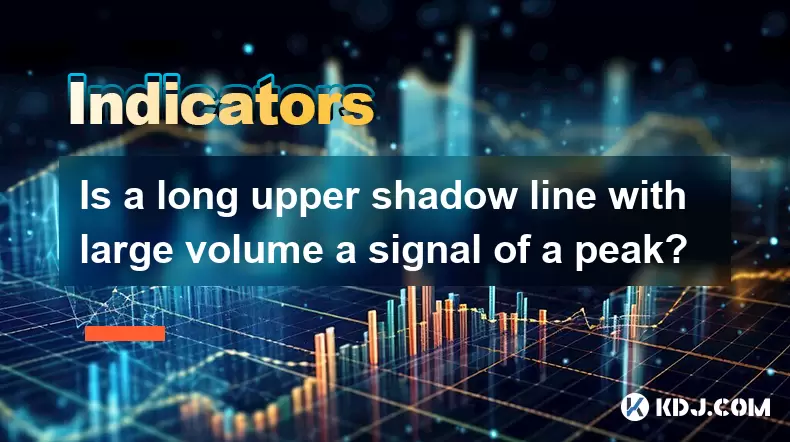
Is a long upper shadow line with large volume a signal of a peak?
Jun 17,2025 at 05:07am
Understanding the Long Upper Shadow LineA long upper shadow line, often referred to as a shooting star or inverted hammer depending on its location in a chart, is a candlestick pattern that indicates potential reversal from an uptrend. This pattern forms when prices rise significantly during the trading period but then fall back to close near the openin...

How to confirm the effectiveness of the average price line support in the time-sharing chart?
Jun 17,2025 at 12:56am
Understanding the Time-Sharing Chart and Its RelevanceIn cryptocurrency trading, time-sharing charts play a crucial role in analyzing short-term price movements. These charts typically display price fluctuations over a specific period, often ranging from minutes to hours. Traders rely on them to make quick decisions based on real-time data. The average ...
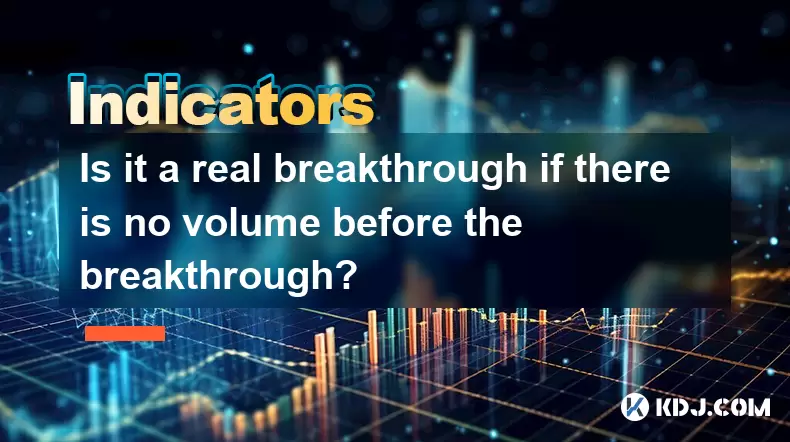
Is it a real breakthrough if there is no volume before the breakthrough?
Jun 17,2025 at 08:03am
Understanding the Concept of a Breakthrough in Cryptocurrency TradingIn cryptocurrency trading, a breakthrough typically refers to a price movement that surpasses a key resistance or support level. Traders often look for such events as potential signals for trend continuation or reversal. However, a crucial factor that determines the strength and reliab...

What does it mean when the momentum indicator breaks above the zero axis?
Jun 17,2025 at 12:43am
Understanding the Momentum IndicatorThe momentum indicator is a technical analysis tool used to measure the speed or velocity of price movements in cryptocurrency markets. It helps traders identify potential trend reversals, overbought or oversold conditions, and confirms existing trends. The indicator typically oscillates around a zero line, with value...
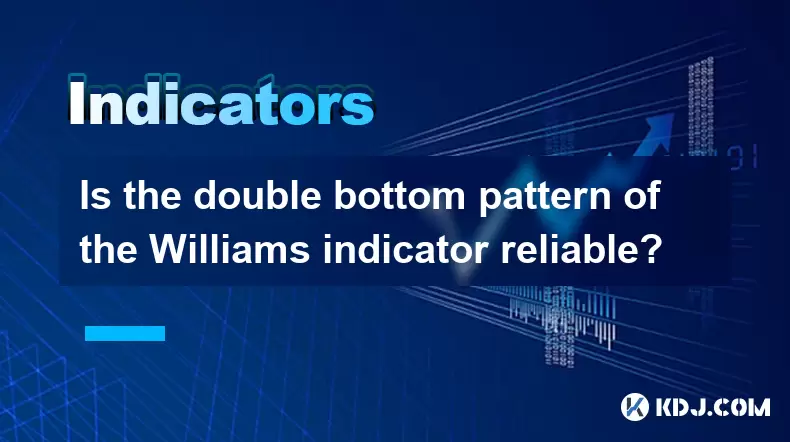
Is the double bottom pattern of the Williams indicator reliable?
Jun 17,2025 at 03:56am
Understanding the Williams Indicator and Its SignificanceThe Williams %R indicator, often referred to as Williams Percent Range, is a momentum oscillator used in technical analysis to identify overbought or oversold conditions in the market. Developed by Larry Williams, this indicator fluctuates between 0 and -100, with readings above -20 indicating ove...
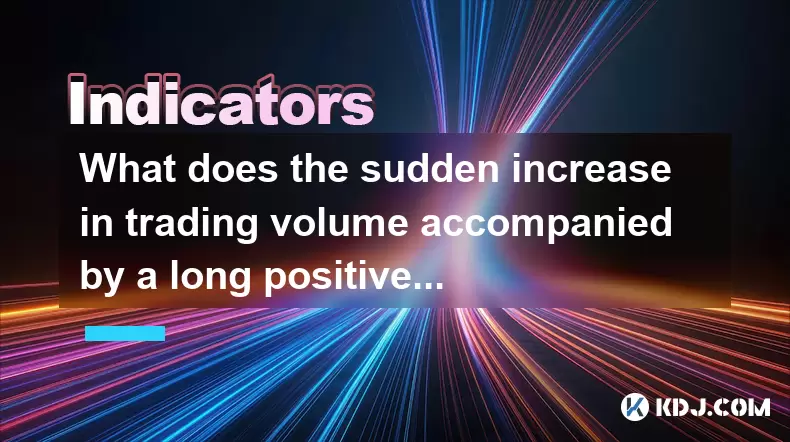
What does the sudden increase in trading volume accompanied by a long positive line mean?
Jun 17,2025 at 06:01am
Understanding the Sudden Surge in Trading VolumeWhen traders observe a sudden increase in trading volume, it typically signals a significant shift in market sentiment. This surge often indicates that more participants are entering or exiting positions, which could be due to news events, macroeconomic data releases, or institutional activity. High tradin...

Is a long upper shadow line with large volume a signal of a peak?
Jun 17,2025 at 05:07am
Understanding the Long Upper Shadow LineA long upper shadow line, often referred to as a shooting star or inverted hammer depending on its location in a chart, is a candlestick pattern that indicates potential reversal from an uptrend. This pattern forms when prices rise significantly during the trading period but then fall back to close near the openin...

How to confirm the effectiveness of the average price line support in the time-sharing chart?
Jun 17,2025 at 12:56am
Understanding the Time-Sharing Chart and Its RelevanceIn cryptocurrency trading, time-sharing charts play a crucial role in analyzing short-term price movements. These charts typically display price fluctuations over a specific period, often ranging from minutes to hours. Traders rely on them to make quick decisions based on real-time data. The average ...

Is it a real breakthrough if there is no volume before the breakthrough?
Jun 17,2025 at 08:03am
Understanding the Concept of a Breakthrough in Cryptocurrency TradingIn cryptocurrency trading, a breakthrough typically refers to a price movement that surpasses a key resistance or support level. Traders often look for such events as potential signals for trend continuation or reversal. However, a crucial factor that determines the strength and reliab...

What does it mean when the momentum indicator breaks above the zero axis?
Jun 17,2025 at 12:43am
Understanding the Momentum IndicatorThe momentum indicator is a technical analysis tool used to measure the speed or velocity of price movements in cryptocurrency markets. It helps traders identify potential trend reversals, overbought or oversold conditions, and confirms existing trends. The indicator typically oscillates around a zero line, with value...

Is the double bottom pattern of the Williams indicator reliable?
Jun 17,2025 at 03:56am
Understanding the Williams Indicator and Its SignificanceThe Williams %R indicator, often referred to as Williams Percent Range, is a momentum oscillator used in technical analysis to identify overbought or oversold conditions in the market. Developed by Larry Williams, this indicator fluctuates between 0 and -100, with readings above -20 indicating ove...

What does the sudden increase in trading volume accompanied by a long positive line mean?
Jun 17,2025 at 06:01am
Understanding the Sudden Surge in Trading VolumeWhen traders observe a sudden increase in trading volume, it typically signals a significant shift in market sentiment. This surge often indicates that more participants are entering or exiting positions, which could be due to news events, macroeconomic data releases, or institutional activity. High tradin...
See all articles

























































































